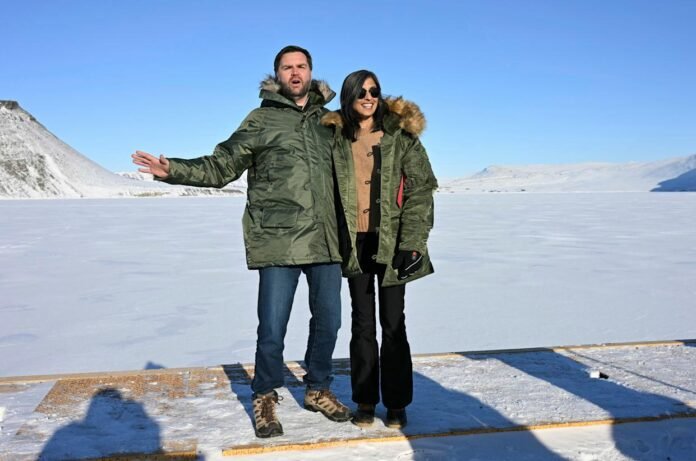U.S. Vice President JD Vance’s abbreviated visit to Greenland escalated into a diplomatic confrontation Friday as he publicly chastised Denmark for its stewardship of the strategically vital Arctic territory while courting Greenlanders to align with Washington. The whirlwind trip, originally planned as a cultural excursion led by Second Lady Usha Vance, transformed into a geopolitical lightning rod focused on the remote Pituffik Space Base, where the vice president made his case for Greenland to reconsider its three-century-old ties to Copenhagen.
Standing at the U.S. missile defense installation 930 miles north of Greenland’s capital Nuuk, Vance accused Denmark of leaving the mineral-rich territory vulnerable to Russian and Chinese influence. “You have not done a good job by the people of Greenland,” Vance declared, claiming Copenhagen had “under-invested” in both regional security and local development. His remarks pointedly referenced the territory’s untapped mineral wealth and increasingly accessible Arctic shipping lanes, though he offered no specific evidence to support claims of foreign “incursions.”
The blunt appeal for Greenland to “cut a deal” with the United States delivered while downplaying President Trump’s past threats of forcible acquisition drew immediate pushback from Danish leaders. Prime Minister Mette Frederiksen emphasized Denmark’s recent defense investments and commitment to Arctic security cooperation “based on the necessary international rules,” while Foreign Minister Lars Løkke Rasmussen objected to Vance’s confrontational tone despite acknowledging room for improved partnership.
The visit’s abrupt scaling back from multiple days to mere hours reflected its political sensitivity, coming amid planned protests and overwhelming local opposition to annexation. A January poll showed 92% of Greenlanders reject joining the U.S., with Prime Minister Múte Bourup Egede having previously criticized the trip as demonstrating “lack of respect” for the territory’s autonomy.
As climate change accelerates the Arctic’s geopolitical importance, Vance’s gambit highlights Washington’s competing priorities: securing critical minerals and shipping routes while navigating delicate alliances with NATO partners. The vice president’s promise of expanded U.S. naval support and icebreaker deployments without immediate plans for additional bases leaves unresolved how the administration plans to balance these strategic imperatives with diplomatic realities in the rapidly transforming Far North.
For continuing coverage on Arctic geopolitics, visit DC Brief.


